In the evening:
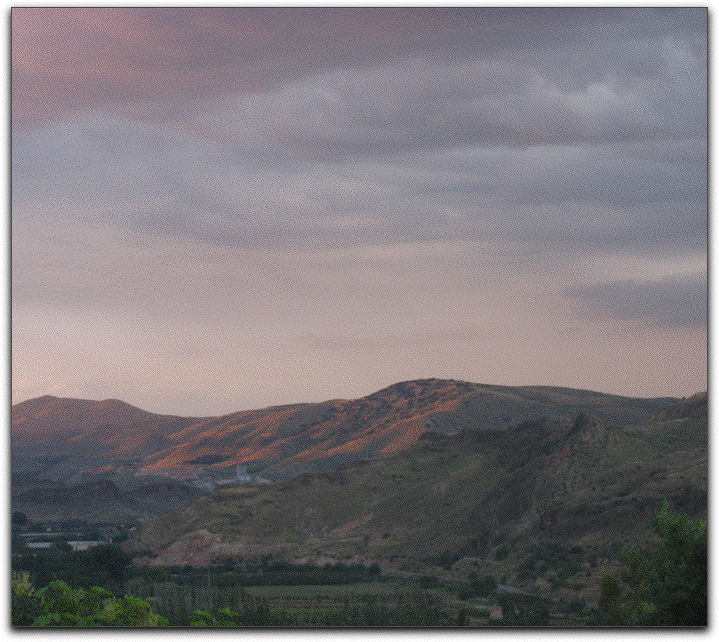
And in the morning:
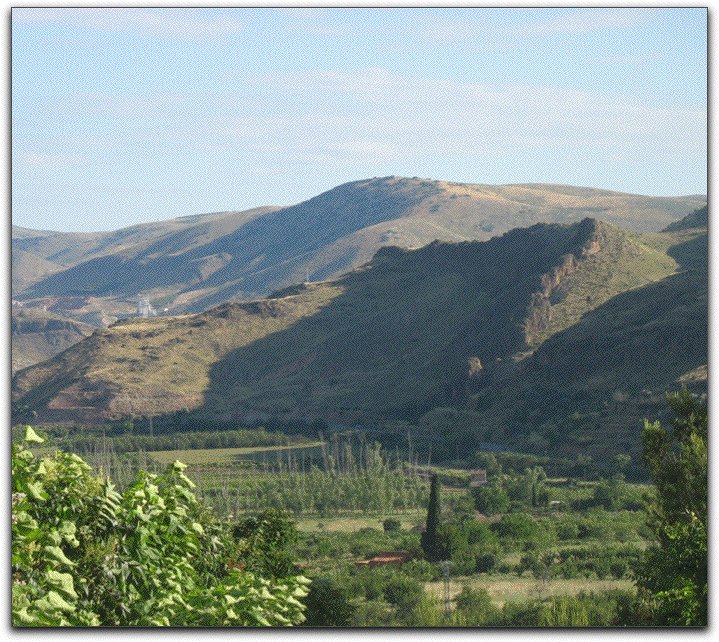
A number of years ago our friends planned a trip to Spain. Knowing nothing of the actual distances, but seeing Belchite in the general vicinity of Barcelona, Mark asked them to go through and take a photo for him. Now he understands how difficult that request was to fill.
However, with Belchite a confirmed stop on our itinerary, in our planning, we checked to see where we could spend the night close to Belchite. The only camp sites “nearby” were in Zaragosa. Zaragosa does not have much “Jewishly” to recommend it. Our Jewish guide book indicates a few sites that might have been the locations of a mikvah or a synagogue. And, autos-da-fe were held monthly there and over 600 conversos were tried during the first three decades of the 1500s.
After a long and emotional day in Belchite, we arrived in Zaragosa. Due to road construction, the poor signage, our difficulty finding the tourist information office, and parking limitations, after about a half hour of frustration, we headed out of town for another campsite. The one we happened upon offered not only a free bottle of wine but also this panorama out our ‘living room/dining room/kitchen/bedroom window.’
In the evening:

And in the morning:

We continued on to Calatayud because of the name, along “the road less traveled.” In fact, as a one-and-half lane road, we hardly saw it traveled as it wound through the town of Embid de la Ribera and its tight valley, cut and irrigated by a lovely stream.
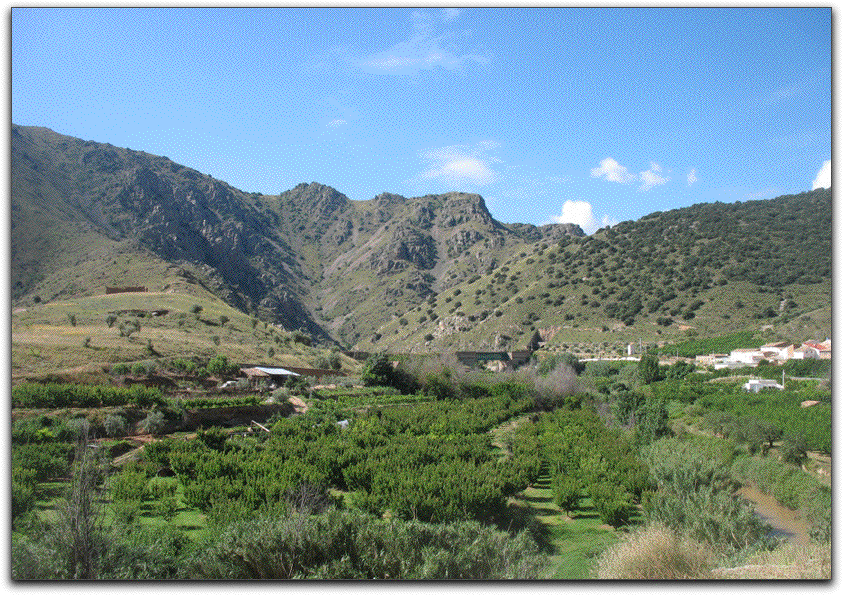
The area reminded Mark of the drive up from Escondido to Ramona along the 78.
As explained in our portrait for that day (June 21) Jane Gerber in her book The Jews of Spain (p. 39), suggests that the name of this town comes from the Arabic Kalaat el-Yahud (Quarter of the Jews). However, other theories explain the name differently. At one time, the town had as many as nine synagogues, though we saw no evidence of Jewish life ever having existed in the city. The town’s other “Jewish” claim to fame: that Anotinette de Loppes (López), the mother of Montaigne was a descendent of the Pazagon famly which was once an important Jewish family of the city.
We did, however, find what Mark calls the “leaning tower of Calatayud,” now the Iglesia de San Pedro de los Francos, an example of Mudejar (Moorish) architecture.
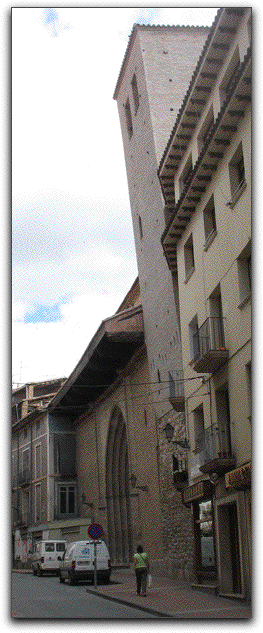
.
We found some nice local chocolates in town, one item using Belgium Callebaut chocolate called Bilbilis (Yolanda) named for the local Roman ruin
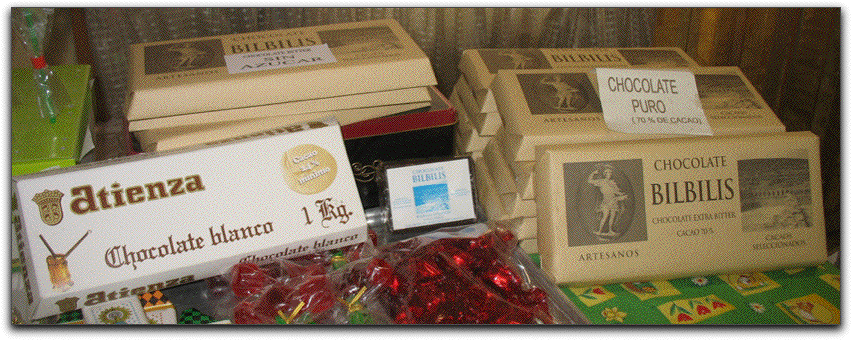
and another called Frutas de Aragon, wonderful chocolate covered fruits (we bought a bag of the orange flavored variety).
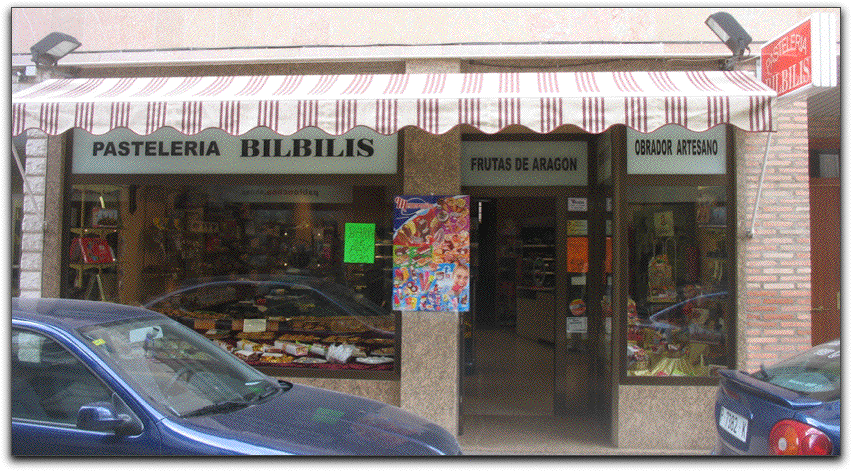
The city center of Calatayud hosted a couple of peacock families who enjoyed the park area by the little stream that ran.
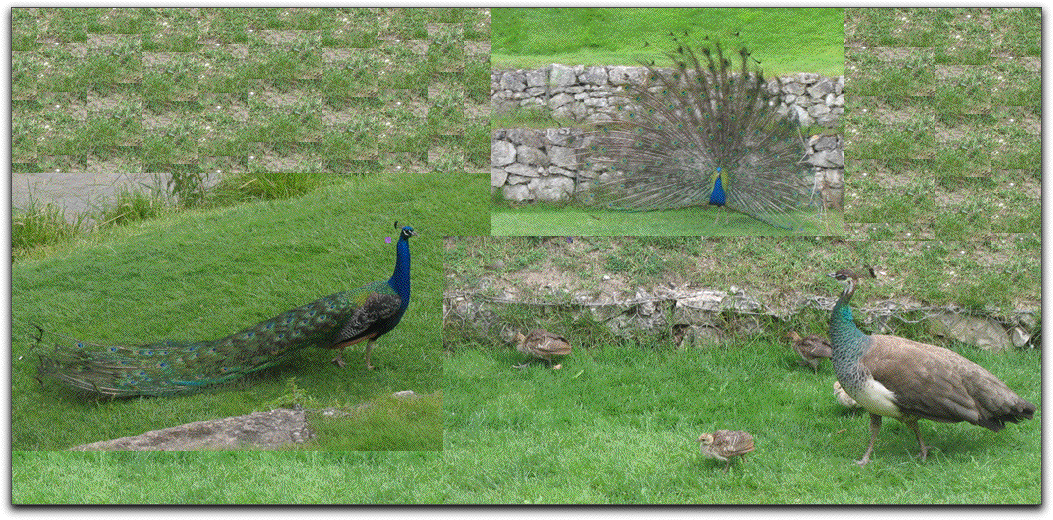
We needed to get to Valencia for Shabbat… and, hopefully, not “just in time for…”.
The drive from Calatayud to Valencia is a long one, but mostly on the Autovia. Just the same, as we checked our trusty Jewish Spain for towns of Jewish interest along the way, we noticed Daroca.
The last sentence of the text about Daroca reads: “The Judería has been identified as lying N of the main plaza close to the Colegiata de Santa María, which contains a 15 C painting by Yojanán de Levi.” We arrived, passing a huge display of “Jamones” drying and available for sale a few hundred meters from the town gate. We drove in, down the main street and found ourselves driving out the opposite gate in less than 500 meters. An easy “U” turn with the van brought us back to the center of town where we parked and started our search. The city itself may not have a Web site, but it does have an impressive colorful tourist brochure we received from a local hotel. From this we were able to find the Colegiata which was, unfortunately, closed for siesta.
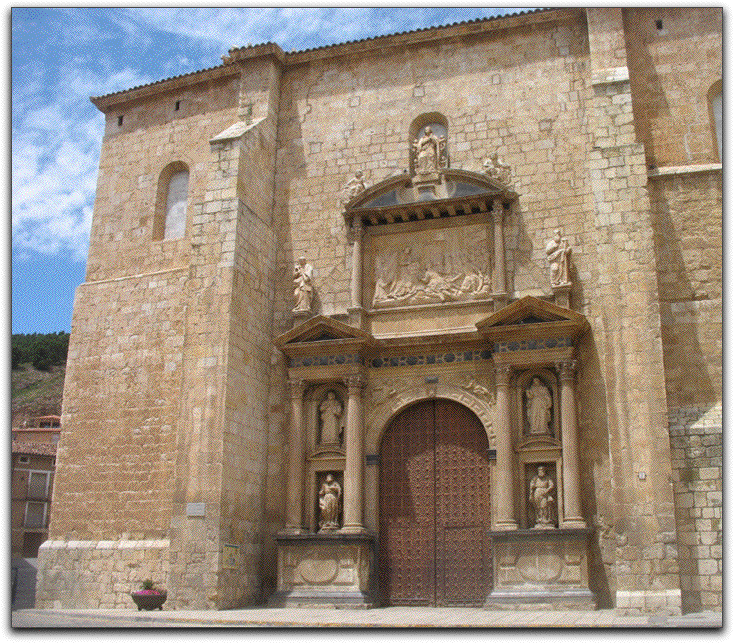
Disappointed, we returned to the van to continue on our way. However, as we read through the town’s brochure we came upon their proposed walking tour:
Passing through this [Portal de Valencia], we will continue along the streets of San Blas and San Lorenzo to arrive at the Plaza del Rey (14 [on the brochure’s map]) from which two narrow streets stem to form the so called Jewish Quarter, the features of which are of great interest.“So called”? “Of great interest”? We were not more than a few meters from the spot so we closed up the van and went searching.
From the main street we found this opening:
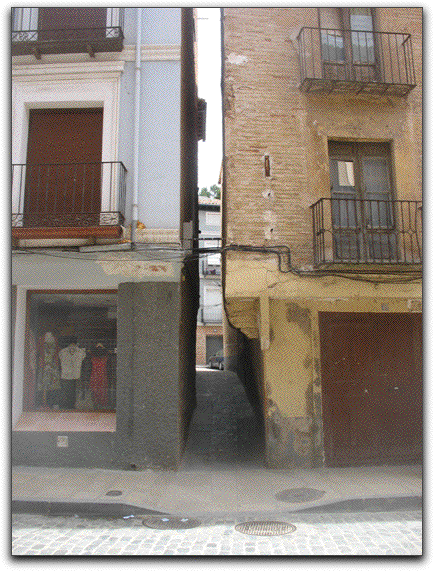
When we walked through and turned around,
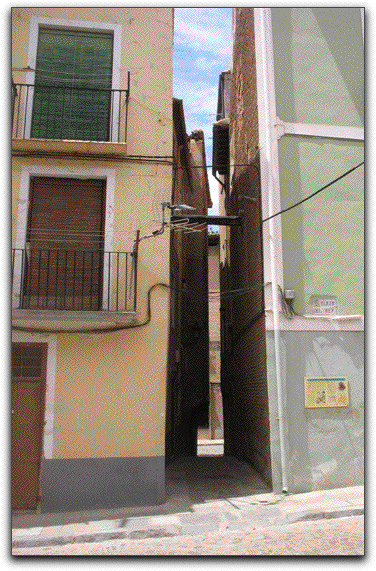
We were able to confirm that were, indeed in the Plaza del Rey,
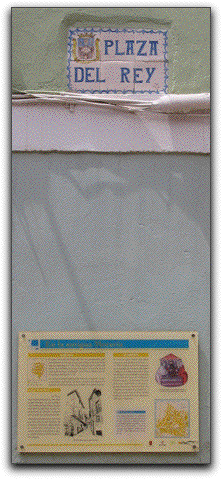
about which the official plaque:
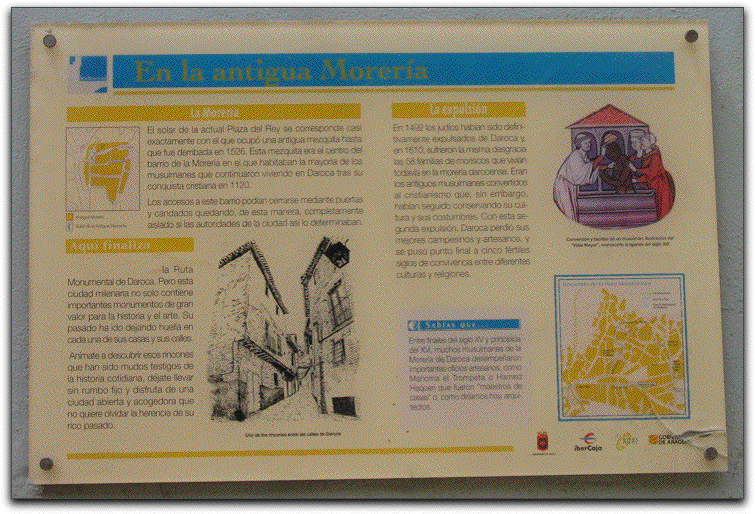
tells about the expulsion:
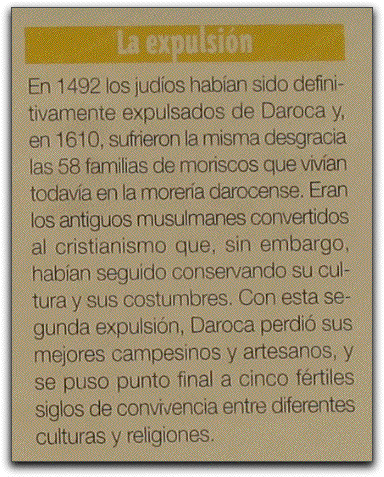
The view from the plaque shows the “plaza”. About the only thing “of great interest” in there is how the cars got in.
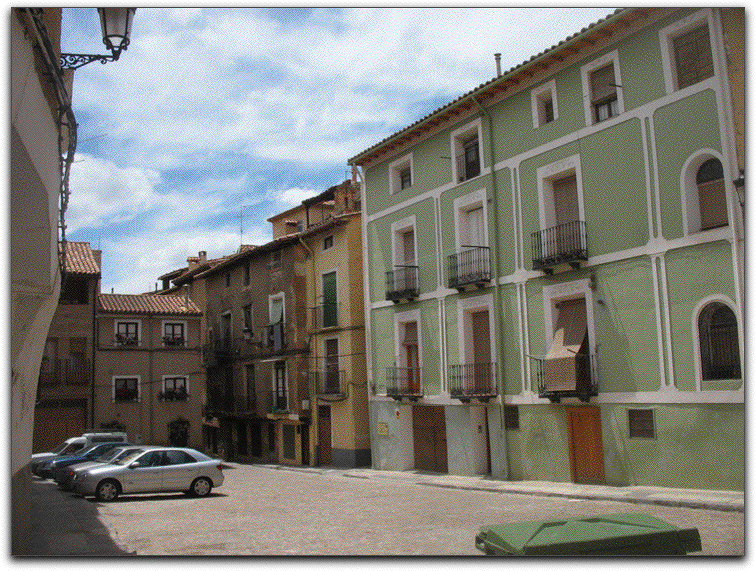
Four “roads” lead in/out. We checked each one looking for why the area might have been called the Jewish Quarter and for more things of “great interest”. This path:
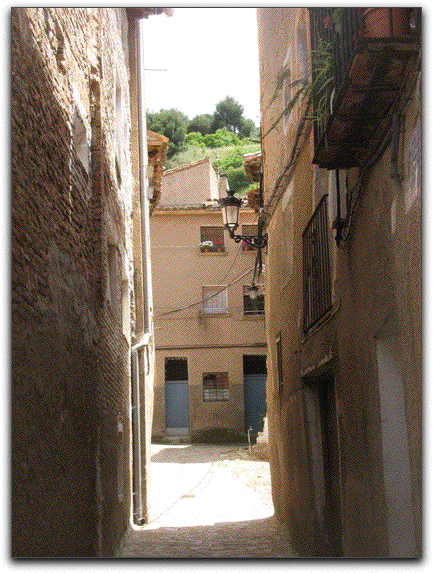
led to this view:
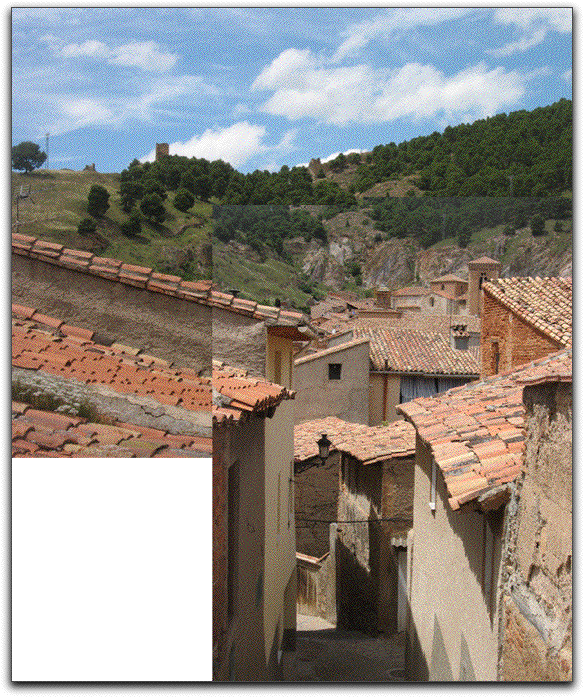
The view in from Calle Fernando el Catolico:
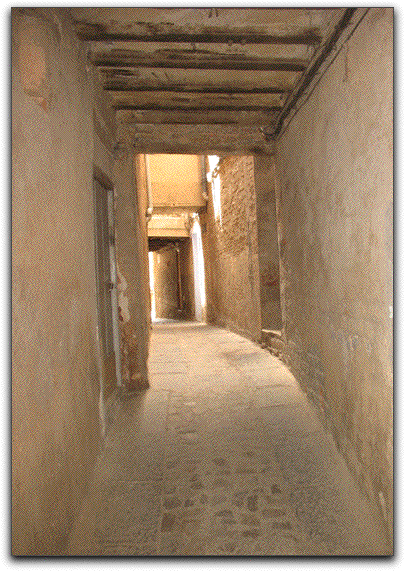
The view in from Callejon Oscuro (which, ironically, has a street lamp):
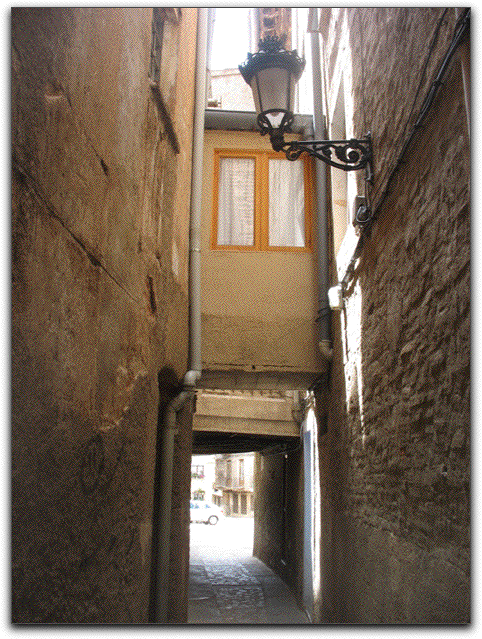
The view out via Calle San Lorenzo:
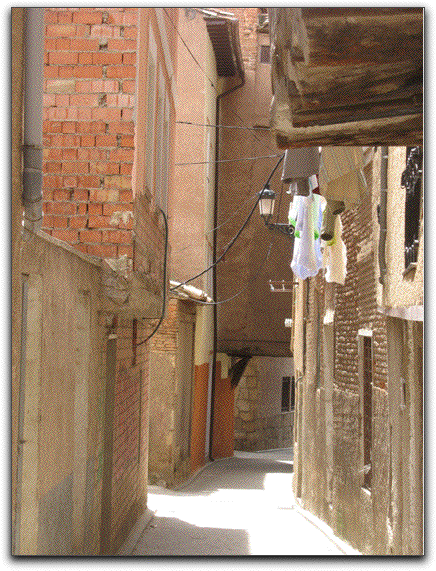
Such is life. We returned to the van having found little/nothing of interest there and made our way to the coast, by-passing Teruel (which had we the time, would probably have been interesting) to Valencia.
Tudela is only 81 kilometers northwest of Zaragosa. It’s the birthplace of Yehuda haLevi and Abraham ibn Ezra, not to mention the great chronicler and traveler Benjamin. Why didn’t we go there? We decided to focus on cities and towns where we might actually find something Jewish. Unforunately, nothing remains in Tudela. Along with a number of other interesting places, Tudela will have to wait for another trip.